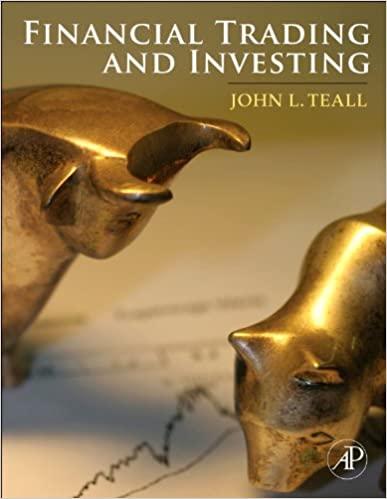Question
2. Time Value of Money, Textbook healthcare finance 6th edition L Gapenski & K Reiter (2016) a. What would be future value of $1,000 invested
2. Time Value of Money, Textbook healthcare finance 6th edition L Gapenski & K Reiter (2016)
a. What would be future value of $1,000 invested at 5% annually for eight years (assuming annual compounding)?
b. What would be future value of a $1,000 invested at 5% annually for eight years (assuming semi-annual compounding)?
c. If there a difference between the results in questions 1 and 2 above? If so, explain the reason for this difference.
d. What is the PRESENT VALUE of the cash flows listed below and the RETURN on the investment (in percentage terms), if we assume discount rates of 8 and 12%?
| Year | Cash Flow |
| 0 | (200,000) |
| 1 | 20,000 |
| 2 | 45,000 |
| 3 | 20,000 |
| 4 | 25,000 |
| 5 | 40,000 |
| 6 | 40,000 |
| 7 | 56,000 |
| 8 | 50,000 |
| 9 | 50,000 |
| 10 | 68,000 |
e. Given the table below and assuming a 12% discount rate for each project:
| Year | Project X | Project Y |
| 0 | (10,000) | (10,000) |
| 1 | 6,500 | 1000 |
| 2 | 3,000 | 3,000 |
| 3 | 3,000 | 3,000 |
| 4 | 1,000 | 6,500 |
i. Calculate the NPV for each project
ii. These are very similar cash flows, but can you explain why the NPV for each project is different?
iii. What do you expect the IRR for each project to be with respect to the NPV? Explain your answer.
iv. Which project would you recommend for implementation and why?
Step by Step Solution
There are 3 Steps involved in it
Step: 1

Get Instant Access to Expert-Tailored Solutions
See step-by-step solutions with expert insights and AI powered tools for academic success
Step: 2

Step: 3

Ace Your Homework with AI
Get the answers you need in no time with our AI-driven, step-by-step assistance
Get Started


